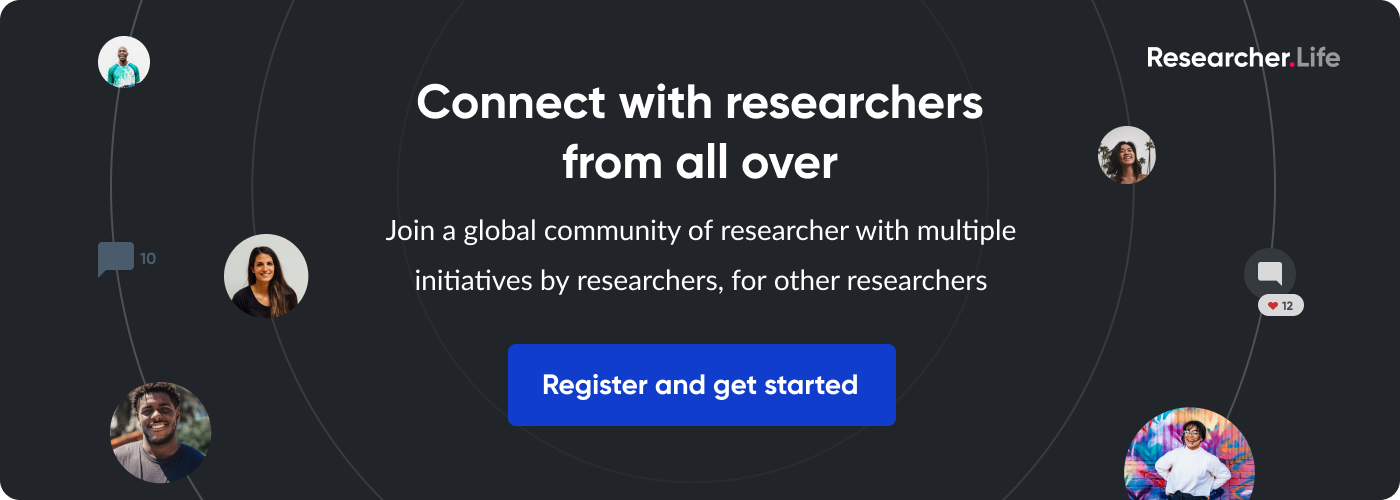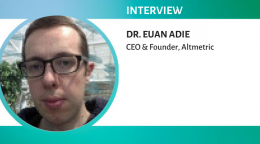How to build your own personal audience for your research paper

Letters of acceptance for journal articles sometimes include a request from the editor for you to share and promote your article online. This is understandable – the journal wants your paper to be as widely read and cited as possible and in turn will benefit from the increased coverage and prestige that follows. It also clearly of value to you as the author as well; but promoting research is tough. You are competing for attention online (which is where most day-to-day promotion will take place) in an environment in which more content is being created and consumed than ever before.
A study on data produced in 2018[1] for example found that in every minute of the day more than 470,000 tweets and 49,000 Instagram posts are published, while users also watch over 4 million videos.
For researchers whose core skillset doesn’t always include online promotion, cutting through this digital noise can seem an insurmountable task. Faced with this challenge it can feel attractive to rely solely on sporadic media coverage, consider tending towards a little sensationalism to try and attract attention, or even just to avoid it altogether.
But there is another way – building your own personal audience through content marketing across available online channels. In this post I will take you through a simple process to find and access online channels that you can use to build an audience to which you can promote your research.
Let's dive in and see how you can go about doing this.
Establishing a personal audience
Your ability to generate interest in a new paper is a function of the quality and novelty of your research (which will drive media interest, for example) and the number of people you can directly inform about your work.
This group of people is your personal audience – a collection of colleagues, followers and connections who have previously shown an interest in what you do. A personal audience is something that you have a level of control over and isn’t tied to any one organisation or platform. In other fields, such as marketing and journalism[2], a personal audience is seen as real strategic strength for building interest in new work which confers value on the audience's 'owner.'
Your journal publishing strategy has peaks and troughs in terms of the time and effort you need to put in. In those troughs, build your capacity for making an ever-greater impact with your important new research by establishing and growing a personal audience and preparing to promote your work to them.
The fundamental process is quite simple;
- Select a range of online channels that you can, and want to, access.
- Create interesting content relating to your research area on those channels on an ongoing basis.
- When the time is right, promote your latest paper to this audience.
As your audience grows, your capacity to gain greater coverage and achieve more impact with your research grows with it. You’ll find that there are all sorts of channels available to you when you stop to map them out – let’s begin with some that may have a ready-made audience you can access.
Assess your available third-party channels
To start with, look at the external communication channels that are already open to you. The quickest way to develop your own audience is to leverage platforms that already have one, and if you can do so in a way that also benefits the owners of those platforms, they are likely to help support and promote your work.
Below is a list of common online channels run by bodies in whose interest it is to share your research success.
For each of them that apply to you, take a look whether they run news sections or blogs on which you could share stories about your work and, if needed, contact the people who manage them to find out how to go about making a contribution:
- Grant funder websites
- Your home institution and/or departmental website
- The websites of professional memberships and associations you belong to
- The personal blogs of your partners and collaborators
- The website or blog of a company involved in similar research
- Industry websites and the blogs of commentators in your field
- Project websites for collaborations you’re involved in
These channels are already set up and they won’t require you to do anything other than submit your content to the right person at the right time. But there are of course other channels out there that can help you build that personal audience if you’re prepared to put in a little extra work.
Review your social media accounts and networking platforms
I’m sure you’re familiar with the concept of promoting your research on social media, so we don’t need to go into this in too much detail.
Just like you assessed the channels in the previous section, now take a look at all the different websites and social media accounts that you have previously set up, or that you could start using. The list of common platforms below is a good place to start:
- SlideShare
- ResearchGate
- Academia
- Mendeley
- Medium
- YouTube
- SnapChat
Any tool you use to keep track of your scholarly output could also provide a channel that can be deployed to share your work. Some of the popular self-archiving platforms enable users to share news and updates which can help generate interest in your entire publishing record.
Of course, not all of these will be relevant to you, and you only have so much time available to put into this work, but take a look at each of them to try and determine the best options for reaching the right people that you’d like to impact.
You could also consider many of these as ‘secondary channels’ – platforms on which you only share links to pieces of content that have been created elsewhere, and not platforms for which you will dedicate time and effort to creating new content.
Between them, the collections of third-party channels listed above and the social media and networking platforms detailed here will cover a huge range of potential opportunities for you to build an audience. But there is one more piece to this puzzle.
What about your own website?
Your personal website is also an important channel for communicating to a target audience – it is also the one you have the most control over.
When it comes to building a personal audience, your website can really play as large or as small a role as you wish. Some academics use websites as simple static portfolios, doing the same job as an online CV or profile on a university website. Others actively blog and update it, sharing interesting insights and material for different target audiences, which can actually lead to an improvement in your journal writing too[3].
Using a personal website as a means of building your capacity to promote new journal articles and other scholarly output is an important service for those interested in your work. People who hear you speak at a conference, see a quote you provided in a news piece or remember your name from a citation or journal article, are often likely to search for your personal website in order to find out more. So ensure that you provide them with a quality site where the information is clear and consistent, and is kept up to date as much as possible.
Of course, everyone’s priorities and schedule are different and how you choose to use your website is a personal decision, but there are several ways to make a site more active and useful to an audience with only minimal ongoing maintenance; by combining other channels you use to share information.
Here are a few approaches to this – but please note that we can’t go into the specifics of how to implement each of them in too much detail as every website technology and content management system (CMS) is different:
- Embed your Twitter feed – This will enable website visitors to see the very latest insights and resources you are sharing.
- Embed your LinkedIn badge – Although this won’t directly show the latest updates, if you share resources on LinkedIn regularly this simple badge will enable website users to easily access your profile and connect with you.
- Embed your department or institution’s ResearchGate activity – ResearchGate currently offers three different kinds of plugins that can be added to your site. These show statistics on ResearchGate members at your department or institution, or a feed of job vacancies. These plugins will update automatically with new members and publications so you won’t need to do any maintenance.
- Embed, link to, or maintain a publications list – All of your citeable scholarly output can be collated into a list on your website and kept up to date with little effort. This will help demonstrate your activity as a researcher and provide the overall context for each new piece of work. It will be helpful to readers if this is kept in reverse chronological order – i.e. with the most recent piece at the top.
- Short pieces linking to other content – Every time you produce a new article, get a quote in the press or have your work featured on other websites, this is an opportunity to easily create a piece of content for your own website. This only needs to be a couple of paragraphs and a link to the original to be of value and you can use simple tools like Google Alerts to automatically track new mentions of your name or research area on the web.
If you are happy that the information on your website does a good job of explaining who you are and what you do, and you have incorporated a few of the easily managed dynamic elements listed above, you’re in a great place to better use your site for promoting your research.
Conclusion
If you’ve followed along, you should now have a really clear and detailed overview of all the different channels you could use to access your target audiences when it is time to share a new paper. Armed with this knowledge you can create a strategy based around your schedule to build a personal audience and share new papers with them once published.
Best of luck putting this all into practice!
Sources:
[1] https://www.domo.com/learn/data-never-sleeps-6
[2] https://www.tandfonline.com/doi/abs/10.1080/17512786.2015.1036903
Comments
You're looking to give wings to your academic career and publication journey. We like that!
Why don't we give you complete access! Create a free account and get unlimited access to all resources & a vibrant researcher community.

Subscribe to Career Growth










